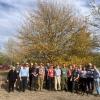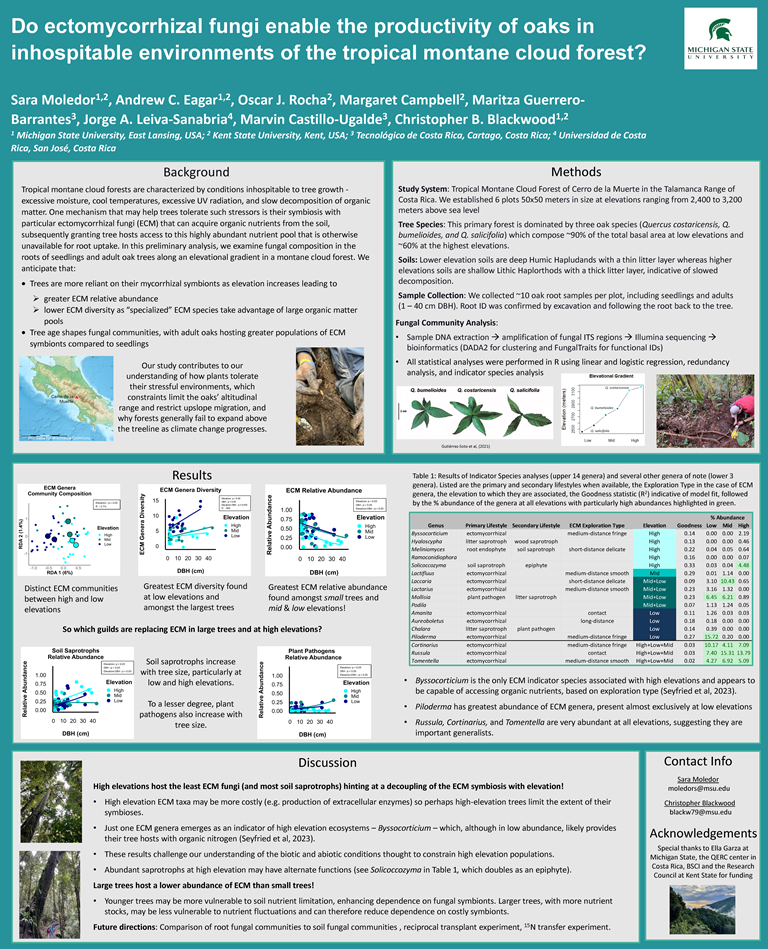Editor's Picks
Plant Focus
Do ectomycorrhizal fungi enable the productivity of oaks in inhospitable environments of the tropical montane cloud forest?
Poster presented at the XX International Botanical Conference, Madrid, Spain, July 21–27, 2024.
Authors:
Sara Moledor1,2, Oscar J. Rocha2, Maritza Guerrero-Barrantes3, Andrew Eagar1,2, Margaret Campbell2, Jorge A. Leiva-Sanabria4, Marvin Castillo-Ugalde3, Christopher Blackwood1,2
Affiliations:
1. Michigan State University, East Lansing, USA
2. Kent State University, Kent, USA
3. Tecnológico de Costa Rica, Cartago, Costa Rica
4. Universidad de Costa Rica, San José, Costa Rica
Abstract:
The mechanisms by which species withstand stresses are critical to study because of the importance of species migration in ecosystems threatened by climate change. Tropical montane cloud forests are generally characterized by conditions inhospitable to tree growth - excessive moisture, cool temperatures, excessive UV radiation, and slowed decomposition. This gives rise to an organic nutrient pool inaccessible to most trees, driving nutrient limitation. Counter to typical Krummholz adaptations in such conditions, the oak trees of the Talamanca Mountain Range in Costa Rica are unexpectedly tall, productive, and dominant on the landscape. One possible mechanism that may relieve the trees of these environmental constraints is their partnership with particular ectomycorrhizal fungi. Most mycorrhizal fungi capture and supply inorganic nutrients, but some species of ectomycorrhizal fungi can acquire organic nutrients, granting tree hosts access to this high-demand nutrient pool that is otherwise unavailable to other vegetation. This would represent a significant advantage that could explain the unexpected survival and great productivity of oaks in these inhospitable regions.
We sampled and sequenced soil and root fungi along an established elevational transect (2,400 – 3,100 meters) dominated by Quercus salicifolia, Q. bumelioides, and Q. costaricensis to characterize these ectomycorrhizal systems. Because increases in elevation are associated with increases in the stressors described above, we expect to see decreased overall abundance and diversity of ECM fungi at the highest elevations. Further we expect that mycorrhizal fungal relative abundances will shift in favor of organic-acquisitive taxa at higher elevations, suggestive of selection for this trait that should provide greater benefit to high-elevation host trees. Our project illustrates the complex relationships between trees and soil fungi at high altitude ecosystems and the role they may play in permitting or hindering range shifts and informing management strategies in light of a changing climate.
















